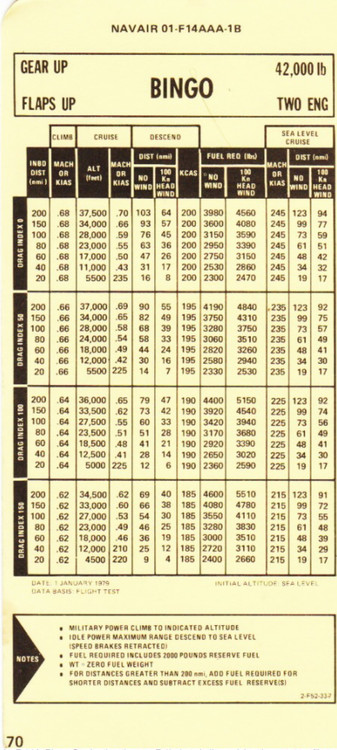

Possum
Members-
Posts
61 -
Joined
-
Last visited
Personal Information
-
Flight Simulators
None, yet.
-
Interests
Aviation
-
Occupation
Pilot
Recent Profile Visitors
The recent visitors block is disabled and is not being shown to other users.
-
Both of those will be DFCS. AFCS was gone by 2000.
-
I think it’s supposed to be 0/0/0 for trim, but I don’t remember for sure.
-
You can light them at the end of the cat shot. At night, the deck crew appreciated AB full flap climb.
-
Designating targets is a small part of what JTACs do.
-
I don’t think that was possible until the B upgrades in 2002-2003.
-
Mostly in agreement, except for the 2 quotes above. 1. Corner speed is not min turn radius. 2. You mention radius, but describe a rate fight.
-

Whats your tactics in dogfights against f18,27s,15s?
Possum replied to mehksauce's topic in DCS: F-14A & B
BFM is primarily about positioning and energy states. The key to winning is in keeping sight of the other guy and being able to successfully gauge his energy state and options in relation to yours. Losing sight, or not actively keeping track = losing. Not properly recognizing the bandits energy state will result in either missed opportunities or being baited into a disadvantage. Energy management is all deciding when to convert airspeed for angles (or elevation) and when to preserve that airspeed for another opportunity. You have to know when to make that trade. Sometimes you make the trade to try and force an error, sometimes you make the trade b/c you know you’ll have a shot. 300 kts was a threshold for me. Below that was an energy sinkhole. If I was going below 300kts, my options were going to be limited and I better be bringing the bandit down there with me or trading it for a distinct positional advantage. Lastly, the Tomcat’s nose will move when you want it to, but it costs energy that isn’t easy to regain. Look up pitch/pulse, I haven’t seen it mentioned here but I’m sure it’s been talked about. -
Some Navy bases had ICLS at the field.
-
The Tomcat ECS was exceptionally loud, I have permanent hearing damage from flying it. The helmet alone wasn’t enough protection. I don’t remember ever hearing the engines with the canopy closed. If they were audible, it had no affect on my ability to fly it. On the ground, the GEs had a very distinctive high-pitched whine in front of the jet. The Tomcat was strange in that it was louder in front of it than behind it. When it turned away, the high pitch whine gave way to a low rumble that was much easier on the ears. I didn’t notice this with any other jet.
-
Auto is when the yellow handle is engaged with the spider detent, and the thumb switch is in the auto position. Read through Victory’s pinned posts to learn how to ensure it’s engaged in DCS.
-
By VVI, do you mean Velocity Vector? VVI is actually Vertical Velocity Indicator. The VV uses the earth as reference, not the ship. It’s placement will vary based on ship speed, which is determined by natural winds. In most circumstances, the VV will be near the Crotch at the ball call. As you approach, it will drift towards the wires and approximate your touchdown point. In the pre-GPS Tomcat, the VV was jerky and lagged from what I hear. With GPS integration, it became much more reliable.
-
Don’t overfly the target. Once you pickle, make a fairly aggressive offset to the left then reverse your turn. Towards the end of TOF, you may have to unload a little and use rudder to keep it from masking.
-
Can’t speak for pre-2000. But, normally 10-14 airborne for each cycle. The amount of gas airborne depends on what’s being supported. You’ll have at least one hawking the recovery, and sometimes others for mission support. I may be wrong, but I thought they usually had a fuel alert set as well. Each fighter sq. kept 5 on the flight deck and would launch 2-4 each cycle. E-2s and Prowlers kind of did their own thing so I can’t speak much for them. Alerts were set based on threat condition.
-
Here is a bingo profile for the A model I found on Google, the profile will be similar for a B. Try a similar profile to get a baseline fuel burn.
-
So did the B.

